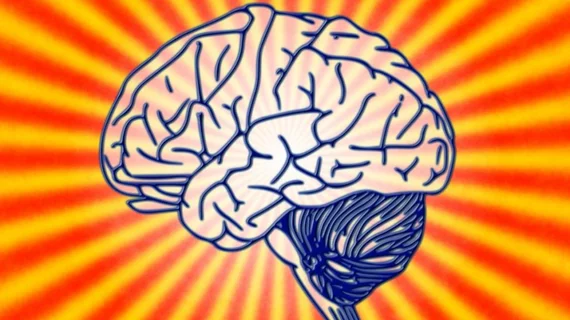What resting-state fMRI tells us about how LSD affects the brain
Researchers have used resting-state fMRI data to show how LSD alters various connections within the brain, sharing their findings in PNAS.
“Interest in psychedelic compounds is growing due to their remarkable potential for understanding altered neural states and potential clinical applications,” wrote Katrin H. Preller, MSc, PhD, of the University Hospital of Psychiatry Zurich in Switzerland, and colleagues. “However, there are major knowledge gaps regarding LSD’s neuropharmacology.”
The team’s double-blind, placebo-controlled study included 25 healthy participants. Participants were separated into three groups. The first group was given LSD after pretreatment with ketanserin, a selective serotonin 2A receptor antagonist. The second group was given LSD after pretreatment with a placebo, and the third group just received a placebo.
Researchers studied dynamic causal modeling (DCM) of resting-state fMRI data after participants were given ketanserin—a selective serotonin 2A receptor antagonist—and the LSD. Resting-state scans were acquired 75 minutes after treatment and 300 minutes after treatment. The DCM helped estimate the strength of various connections within the brain, providing information that could be used to infer causality.
Overall, the data revealed that LSD alters connectivity within the brain’s cortico–striato–thalamo-cortical (CSTC) regions in two primary ways. First, it increased effective connectivity from the thalamus to the posterior cingulate cortex (PCC) when pretreatment with the ketanserin occurred. Second, it decreased effective connectivity from the ventral striatum (VS) to the thalamus independent of the ketanserin.
“The PCC has repeatedly been shown to be involved in the effects of psychedelics,” Preller and colleagues explained. “For example, decreased functional connectivity between the PCC and frontal brain areas has been reported after psilocybin and LSD administration, as well as decreased global brain connectivity after LSD administration.”
The authors also highlighted the importance of these findings.
“These results advance our mechanistic understanding of the action of psychedelics in health and disease,” the authors wrote. “This is important for the development of new pharmacological therapeutics and also increases our understanding of the mechanisms underlying the potential clinical efficacy of psychedelics.”

